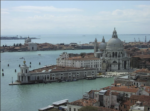Lavorare Stanca
.jpg)
Una cadenza secca e disinvolta, ritmica, non ossessiva, ma dilatata nel tempo dell’esecuzione per sovrapposizione. Pratica quotidiana e liberatrice, proprio nella stesura della pittura ripetuta con insistenza perché, come scrive Cesare Pavese, la ripetizione è un pegno di sincerità.
Comunicato stampa
La galleria Thomas Brambilla è orgogliosa di presentare la mostra Lavorare Stanca che si aprirà sabato 17 gennaio 2015 alle ore 18.30.
Una cadenza secca e disinvolta, ritmica, non ossessiva, ma dilatata nel tempo dell’esecuzione per sovrapposizione. Pratica quotidiana e liberatrice, proprio nella stesura della pittura ripetuta con insistenza perché, come scrive Cesare Pavese, la ripetizione è un pegno di sincerità.
Corinna Gosmaro e Alessia Xausa circoscrivono le loro opere intorno a motivi fondamentali che non si curano di ampliare ma, al contrario, di concentrare; stile diventa cadenza, forma biografica del proprio rapporto con la tela, lavoro fisico del sovrapporre, dello sfregare contro un supporto, dell’impregnare. Lavoro fisico che obbedisce al proprio corpo e che, parafrasando Pavese ne Il mestiere di vivere, “...non è fatto di realismo psicologico, né naturalistico, ma di un disegno autonomo di eventi, creati secondo uno stile che è la realtà di chi racconta, unico personaggio insostituibile”.
Il rimando allo scrittore piemontese non è dato solo da genuino e giovanile entusiasmo verso una poetica lirico realista o verso l’unione di cultura “engagè” con l’emozione più viva e tragica, ma dal solido e inattuale concetto di arte come lavoro, lavoro duro e quotidiano, che impegna le risorse del proprio corpo e della propria intimità. Eduardo diceva che: “Per fare buon teatro bisogna rendere la vita difficile all'attore.” Ed anche Pavese era maestro per creare trappole esistenziali ben raccontate e soprattutto vissute.
Per le nostre due attrici le difficoltà devono stare tutte all’interno del farsi dell’opera, del lavoro materiale della loro pittura. “Lavorare stanca” ed è questa stanchezza fisica, ricercata come pratica liberatoria, che rimette l’arte al centro del destino della persona. Quindi un’arte che non si presenta come immagine da condividere in un rimbalzo di citazioni e ammiccamenti, ma registrazione della propria presenza d’artista, fisica, insostituibile e per questo autentica. Il lavoro dell’opera al centro dell’esperienza artistica.
Le opere di Alessia Xausa sono il risultato di una sovrapposizione di strati di colore e grafite; la fluidità del colore si mischia con la matita creando sempre sfumature e toni di luminosità differenti integrati dal segno vibrante della matita e del pastello. Lavorando sulla superficie l’artista allarga i buchi bianchi che si sommano, sovrappongo e si dividono con i grigi e i neri. Nelle sue opere usa la tela grezza proprio per la qualità del materiale che, essendo privo di preparazione impermeabilizzante, assorbe a trattiene il colore. Le sue ampie tele simili a dei lenzuoli, a delle “sindoni” dove il colore è una traccia che impregna il tessuto. Alessia dipinge per “impregnazione” aggiungendo bianco su bianco, colorando la tela grezza spesso solo con l’acqua sporca che fa assorbire la grafite dalla tela, costringendo l’artista a ripassare in continuazione il colore per ottenere l’effetto desiderato.
Corinna Gosmaro dipinge spesso su filtri industriali sui quali il pennello non può scorrere liberamente, perciò usa stracci e spugne per trasferire il colore nelle maglie strette della superficie che spesso si rompe e lacera. Il filtro è un materiale plastico che oppone resistenza alla sua pittura, il colore viene trasferito tramite pressione; le mani dell’artista premono il colore allargandolo, spalancandolo “a bocca aperta”. Nelle opere di Corinna Gosmaro il colore viene trascinato in un paesaggio di affioramenti, dove lo spazio dell’opera rappresenta il tempo della sua esecuzione: luogo di percezione e proiezione dell’artista.
La pittura delle due artiste è un momento individuale autentico che tuttavia si estende al di fuori del soggetto, è somma visiva di tutte le immagini registrate dai loro occhi e nel contempo è racconto di un’emozione comune legata al tempo e al territorio condiviso: nessun biografismo o moralismo contenutistico, ma un’arte che ritorna ai suoi fondamentali: l’arte è al lavoro.
Thomas Brambilla Gallery is glad to announce the opening of the exhibition Lavorare Stanca with Corinna Gosmaro and Alessia Xausa, on Saturday January 17th, 2015 at 18:30.
A blunt and free, rhythmic, not obsessive cadence expanded in the time of execution by overlapping.
A daily and liberating practice, a painting insistently repeated, because “repetition is a pledge of sincerity”, as Cesare Pavese wrote.
Corinna Gosmaro and Alessia Xausa circumscribe their works around fundamental reasons that do not care about expanding but about concentrating; style becomes cadence, a biographical form of their own relationship with the canvas, physical work of overlapping, rubbing against a support, impregnating.
It is a physical work that obeys the body, "It is not made of psychological or natural realism, but it is made of an independent design of events, created with a style that is the reality of who is telling it, the narrator is the only irreplaceable character", quoting Pavese’s Il mestiere di vivere.
The reference to the Piedmontese writer is offered by a genuine and youthful enthusiasm towards a lyrical-realistic poetics, or towards the union of culture - committed to politics and society - with vivid and tragic emotions. However, it is also referred to the solid and outdated concept of art as work - hard and daily work actually. It is a work which commits the resources of body and intimacy.
Eduardo De Filippo said: "To do good theater it is necessary to make life difficult for the actor." Pavese was a real master in creating existential traps, well told and very well lived too.
For these two actresses difficulties have to be inside the creation of the work, inside the material work of their paintings.
Lavorare Stanca - Hard work is exhausting, and this physical fatigue, this liberating practice, puts art in the center of everyone’s destiny. So this is an art that present itself as a registration of the artist’s presence, without quotes or references: it is something physical, irreplaceable and, therefore, authentic. The work of art is the centre of artistic experience.
The works of Alessia Xausa are the result of a superposition of layers, made of color and graphite. The fluidity of the color is mixed with the pencil, creating shades and tones of different brightness, integrated with the gestural and vibrant sign of pencil and pastel. Working on the surface, the artist widens white holes that add up, overlap and divide each other with grays and blacks. In her works the artist uses raw canvases because of the quality of this material: without any waterproofing preparation, it absorbs and retains the color. These large canvases are like sheets, or "shrouds" where color is a track permeating the fabric. Alessia paints by "impregnation", adding white on white, often coloring the raw canvas with dirty water only, that absorbs graphite from canvas themselves, forcing her to go over and over again on the color to get the desired effect.
Corinna Gosmaro often paints on industrial filters on which the brush cannot freely flow: she uses rags and sponges to transfer the color in the meshed surface that often breaks and tears. The filter is a plastic material that resists her painting and her body too. The artist widens the color, making it "open mouthed". In Corinna Gosmaro’s works, color is dragged into landscapes where the working space represents the time of execution: a place of both perception and projection of the artist’s mind.
The painting of both artists is an individual and authentic moment which however expands beyond the subject. It is a visual addition of every image recorded by their eyes and in the meantime a story of emotions they have in common, linked to shared time and space. There is no biography or moralism in the content, but an art going back to its fundamentals: art is at work.
Corinna Gosmaro
Nata nel 1987 a Savigliano, vive e lavora a Torino. / Born in 1987 in Savigliano, Italy, where he lives and works.
Tra le principali mostre personali e collettive / Solo and group exhibitions include: Funzione Continua, Thomas Brambilla Gallery, Bergamo, Italy (with Domenico Bianchi, Dadamaino, Raoul De Keyser, Carlos Garaicoa, Ron Gorchov, Alessia Xausa); Sphères, Thomas Brambilla Gallery / Galleria Continua, Les Moulins, Boissy-Le-Chàtel, France; To be continued, Raffaella De Chirico Contemporary Art, Turin; TO_SH TORINO SHANGHAI. Dialoghi d’arte, Palazzo Saluzzo Paesana, Turin; I-SOLA, Raffaella De Chirico Contemporary Art, Turin (solo); Project Room, IGAV, Castiglia di Saluzzo (solo); November. Artists' hot period, Turin; You and whose army?, curated by Spazio Ferramenta, Turin (solo); Scogliere, Academy of Fine Arts, Turin; Boetti Fahrenheit 2011, Turin.
Alessia Xausa
Nata nel 1991 a Torino, dove vive e lavora. / Born in 1991 in Turin (Italy), where she lives and works.
Tra le principali mostre personali e collettive / Solo and group exhibitions include: Studiolo, The Best Of Italian Youth, Museo Pinacoteca San Francesco, Repubblica San Marino; Sphères, Galleria Continua/Les Moulins, Boissy-Le-Chàtel, France; Funzione continua, Thomas Brambilla Gallery, Bergamo, Italy (with Domenico Bianchi, Dadamaino, Raoul De Keyser, Carlos Garaicoa, Ron Gorchov, Corinna Gosmaro); Too big or not too big, Thomas Brambilla Gallery, Bergamo, Italy (with William Anastasi, Dario Beatovic, Dove Bradshaw, Marco Cingolani, Tom Friedman, Oscar Giaconia, Thomas Helbig, Anatoly Osmolovsky, Erik Saglia); Sguardi Luminosi, Motorvillage, Turin, Italy.



